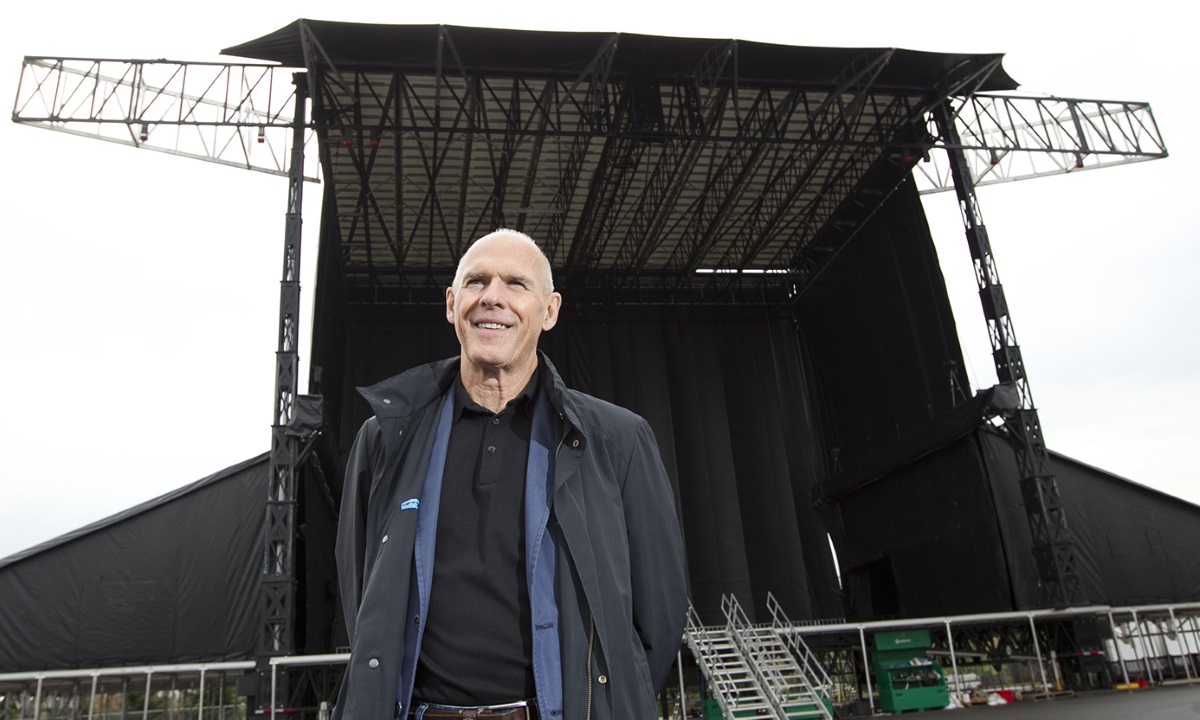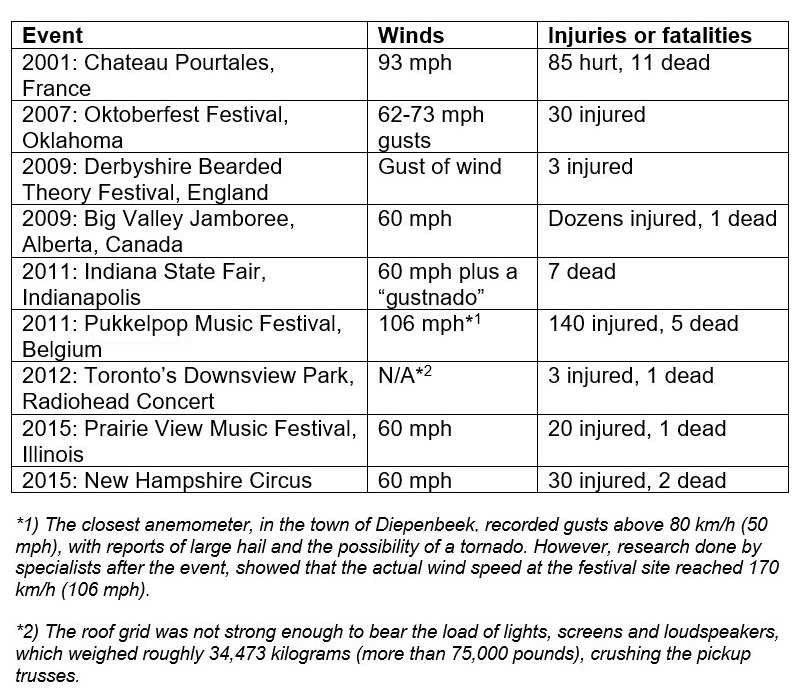
Sidebar – What’s a mobile stage?
Portable, collapsible, and transportable, capable of being deployed (and dismantled) using pre-assembled structures that unfold (and fold) hydraulically (or alternatively, using cables and pulleys), and sequentially into a self-supporting (no ground support, cables or ballast), self-leveling stage without the need for other tools or machinery in a short time frame with little manpower due to its inherent self-contained hydraulic fluid and motors (in the case of a hydraulically-operated stage), hinged telescopic columns, and roof structure.
It’s both a public building (safety, wind resistance, liabilities) and a stage (rigging for equipment and lights).
Mobile stages must be ready for any kind of condition from high winds to tropical storms.
Safety regulations for the concerts and events themselves haven’t kept up the pace in part because they aren’t standard across state, province, or country. No single government agency oversees or sets rules for outdoor concerts, leaving a range of guidelines across events.
Weather-tracking technology can give festival and fair organizers warnings well ahead of hazardous storms and software is available to help plan, usually giving organizers enough lead time to act. But accidents do happen as evidenced by the following table.
Based in Canada, Bernadette Broderick (Not Bernie) has served as a technical writer for several decades, and she’s the co-founder of Truth In Audio.

